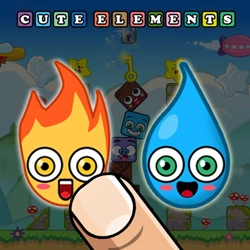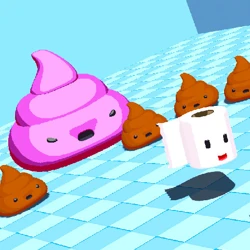Description:
The enthralling world of the worm game captivates you in a unique and intriguing manner, pulling you into a vibrant and dynamic gaming experience. Similar to conventional tile matching games, the worm game revolves around locating and pairing tiles that depict the same animal. However, what sets this game apart is the incorporation of distinctly shaped and sized tiles.While it may sound a bit like the traditional mahjong, the worm game's charm lies in the divergence from such classic games. In this game, the tiles have been intentionally designed to encapsulate a multitude of shapes and sizes. This adds a level of complexity and challenge, augmenting the thrill and excitement of the game.
The principle of the worm game is relatively simple - each tile is marked with the picture of an animal, and your mission as a player is to find another tile with an identical animal representation. The game beckons players to rediscover their affinity for animals, turning every flip of a tile into a captivating exploration of a catalogue of fauna.
In stark contrast to the constraints of traditional games, where tiles of equal dimensions are paired, the worm game embraces variety. Its beauty lies in the chance to match different sized tiles adorned with same animal pictures. It doesn't matter if one tile is larger than the other, a trait that adds an unexpected but compelling twist to the game rules. All that matters in the worm game is the similarity of the animals illustrated on the tiles, irrespective of their dimensions.
The worm game makes a riveting journey out of a simple task, animating your gaming experience with an unexpected twist of variety and quirk. It is the perfect way for both gaming veterans and novices to unwind and put their cognitive and matching skills to test. The game also stands as a testament to the innovative blend of traditional gaming substance with modern alterations, appealing to every gamer's taste.
As you navigate through the worm game, finding matching tiles despite varying shapes and sizes, one thing becomes clear - this game is more about the journey than the outcome, more about the process than the end-goal. It teaches you to adapt, strategize, and enjoy, every step of the way. This is the magic of the worm game, a novel avenue of gameplay that is sure to keep you enthralled, providing you with a roller coaster ride into the world of tile matching.
Instructions:
Find tiles with the same animals to clear the entire playing field and free all 40 animals from captivity. You can use the hints and shuffle the tiles on the playing field.What are Browser Games
A browser game or a "flash game" is a video game that is played via the internet using a web browser. They are mostly free-to-play and can be single-player or multiplayer.
Some browser games are also available as mobile apps, PC games, or on consoles. For users, the advantage of the browser version is not having to install the game; the browser automatically downloads the necessary content from the game's website. However, the browser version may have fewer features or inferior graphics compared to the others, which are usually native apps.
The front end of a browser game is what runs in the user's browser. It is implemented with the standard web technologies of HTML, CSS, JavaScript, and WebAssembly. In addition, WebGL enables more sophisticated graphics. On the back end, numerous server technologies can be used.
In the past, many games were created with Adobe Flash, but they can no longer be played in the major browsers, such as Google Chrome, Safari, and Firefox due to Adobe Flash being shut down on December 31, 2020. Thousands of these games have been preserved by the Flashpoint project.
When the Internet first became widely available and initial web browsers with basic HTML support were released, the earliest browser games were similar to text-based Multi-User Dungeons (MUDs), minimizing interactions to what implemented through simple browser controls but supporting online interactions with other players through a basic client–server model.[6] One of the first known examples of a browser game was Earth 2025, first released in 1995. It featured only text but allowed players to interact and form alliances with other players of the game.



